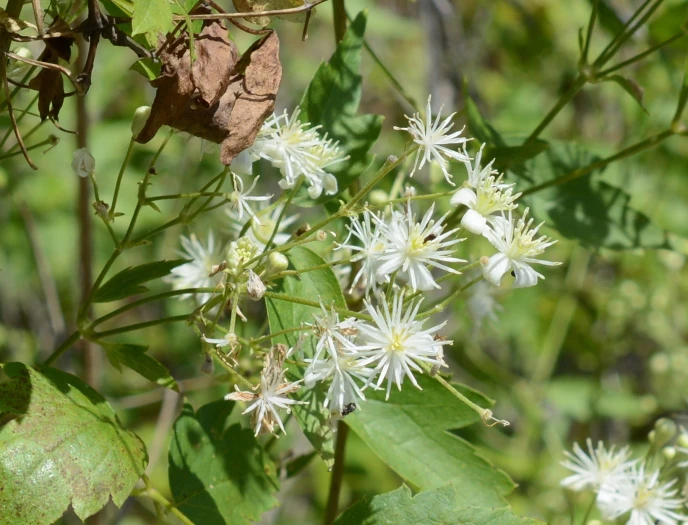Western White Clematis
(Clematis ligusticifolia)
Western White Clematis (Clematis ligusticifolia)
/
/

Alison Northup
CC BY 4.0
Image By:
Alison Northup
Recorded By:
Copyright:
CC BY 4.0
Copyright Notice:
Photo by: Alison Northup | License Type: CC BY 4.0 | License URL: http://creativecommons.org/licenses/by/4.0/ | Rights Holder: Alison Northup | Publisher: iNaturalist | Date Created: 2019-07-03T14:29:28-07:00 |











































































Estimated Native Range
Climate Requirements for Lucknow, India
| This Plant | Your Site | Plant Suitability for Your Location | ||
|---|---|---|---|---|
| • Precipitation | 4" - 73" | 39" | Aquatic | Aquatic |
| • High Temp. | 65°F - 104°F | 105°F | Your summers may be too hot for this plant. | Too hot |
| • Low Temp. | -7°F - 49°F | 49°F | OK, but your winter temperatures are warmer than normal for this plant | OK |
This plant may not grow well at your location - your precipitation is too high.
Summary
Clematis ligusticifolia, commonly known as Western White Clematis, Yerba de Chiva, or Virgin’s Bower, is a deciduous vine native to a variety of habitats including streamside thickets, chaparral, wooded hillsides, and coniferous forests in the western United States, particularly in areas with elevations up to 8,500 feet (2,600 meters). This species typically climbs with the aid of leaf stalks that twist around supporting structures. It can reach lengths of up to 20 feet (6 meters) and is known for its profusion of small, fragrant, white flowers that bloom from late spring to early summer. The flowers are quite showy, with four petal-like sepals, and are followed by decorative, plume-like seed heads.
Western White Clematis is valued for its ability to cover fences and arbors quickly, providing a lush display of greenery and flowers. It is often used in garden landscapes for vertical interest and is also suitable for naturalizing in wild garden settings. This clematis prefers well-drained soils and can tolerate a range of conditions from full sun to part shade. While it is drought-tolerant once established, it benefits from regular watering during prolonged dry periods. Gardeners should be aware that all parts of the plant are toxic if ingested, and it can cause skin irritation in some individuals. It is also susceptible to clematis wilt, a fungal disease that can cause sudden wilting and death of the plant.CC BY-SA 4.0
Western White Clematis is valued for its ability to cover fences and arbors quickly, providing a lush display of greenery and flowers. It is often used in garden landscapes for vertical interest and is also suitable for naturalizing in wild garden settings. This clematis prefers well-drained soils and can tolerate a range of conditions from full sun to part shade. While it is drought-tolerant once established, it benefits from regular watering during prolonged dry periods. Gardeners should be aware that all parts of the plant are toxic if ingested, and it can cause skin irritation in some individuals. It is also susceptible to clematis wilt, a fungal disease that can cause sudden wilting and death of the plant.CC BY-SA 4.0
Plant Description
- Plant Type: Vine
- Height: 3-30 feet
- Width: 2-6 feet
- Growth Rate: Moderate
- Flower Color: White, Cream
- Flowering Season: Summer
- Leaf Retention: Deciduous
Growth Requirements
- Sun: Full Sun, Part Shade
- Water: Medium
- Drainage: Fast, Medium
Common Uses
Bee Garden, Bird Garden, Butterfly Garden, Deer Resistant, Drought Tolerant, Fragrant, Hummingbird Garden, Low Maintenance, Rabbit Resistant, Showy Flowers
Natural Habitat
Native to streamside thickets, chaparral, wooded hillsides, and coniferous forests up to 8,500 feet (2,600 meters) in the western United States
Other Names
Common Names: Old-Man’s Beard, Yerba De Chiva, Virgin’s Bower
Scientific Names: Clematis ligusticifolia, Clematis neomexicana, Clematis suksdorfii
GBIF Accepted Name: Clematis ligusticifolia Nutt. ex Torr. & A.Gray